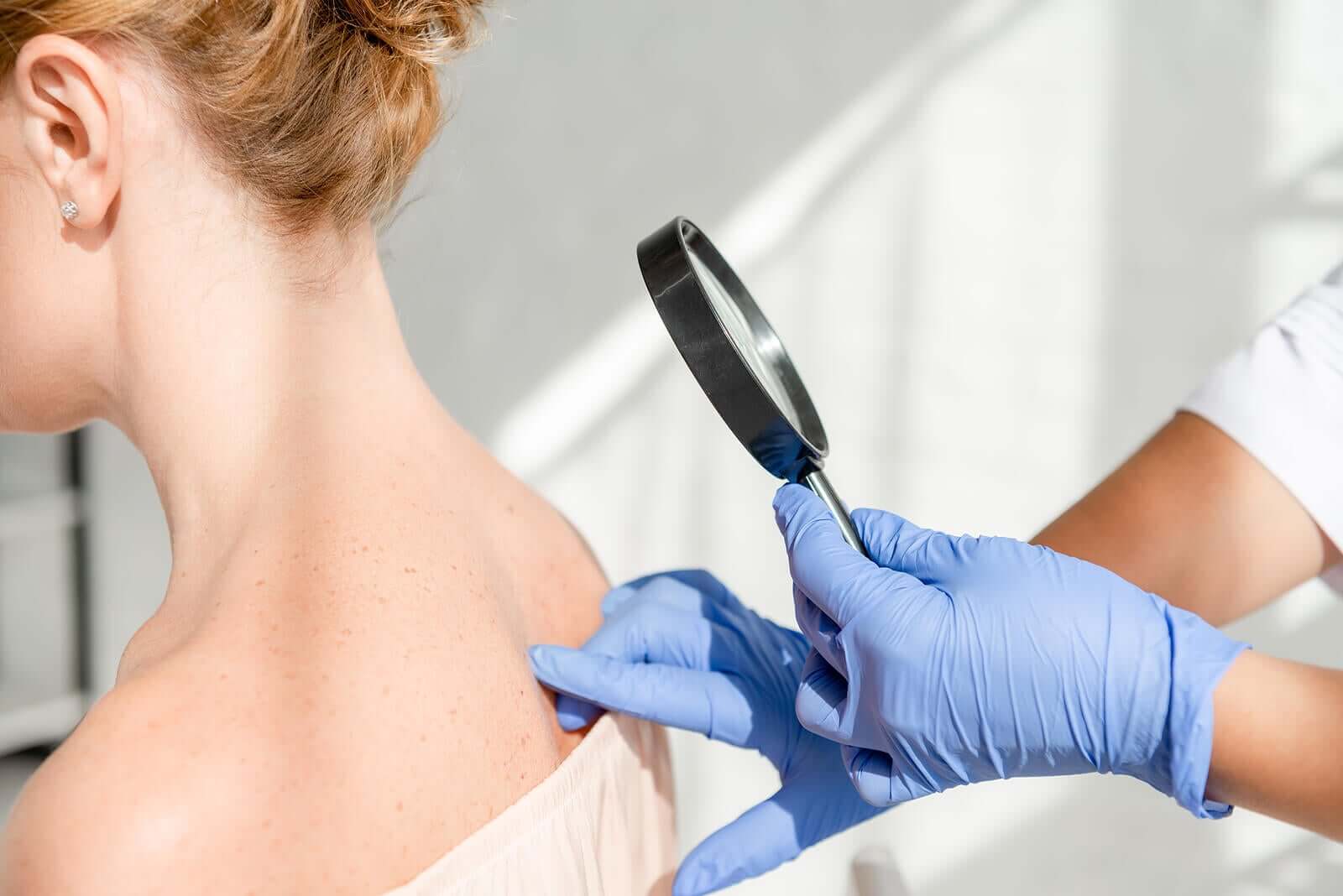Cutaneous Candidiasis: Five Treatments

Cutaneous candidiasis is a type of infection that arises when Candida albicans, a fungus, makes itself at home on your skin. These microorganisms are usually present on your skin without causing you major problems. However, certain imbalances can cause them to multiply, triggering uncomfortable symptoms.
At first, the discomfort is typically bearable and doesn’t usually cause major problems. In spite of this, it’s essential to treat it because the infection can and will spread to other parts of the body, becoming more complex. So, what should you do to combat it?
Tips on how to treat cutaneous candidiasis
The genus Candida, “mother” of many yeast species, can be potentially harmful to the body. Though it’s common to have it in our bodies, some strands multiply excessively and lead to infections. When it burrows in the skin, it often leads to cutaneous candidiasis.
This condition can manifest in various ways depending on its evolution and the response of your individual immune system. However, at a general level, it may reveal in the form of:
- Eruptions or blisters
- Red or purple patches
- White and scaly patches on the affected areas
- The detachment of dry, scaly skin
- Skin cracks and bleeding
- A burning or painful sensation
- Redness
- Pimple-like pustules filled with pus.
Discover: Candidiasis: What Is It?
Five Treatments for Cutaneous Candidiasis
Most treatments for this condition consist mainly in the administration of topical anti-fungal agents. They may come as talcum powders, creams or lotions. However, sometimes oral medications are also prescribed. To complement the treatment, it’s essential to keep in mind a few things. Find out what they are!
1. Avoid using wet or damp clothing

The air humidity, together with the warm environment of your body, both create a perfect environment for fungus to get cozy and multiply. Bathing suits and sweaty training clothes are particularly unfavorable to people with cutaneous candidiasis. Therefore, avoid keeping them on for too long after your physical activity, as they create an environment that’s highly conducive to the growth of fungi. Your symptoms may worsen after keeping wet clothes on too long.
2. Wear Loose Cotton Clothing
The type of clothing you wear can greatly contribute to the relief of your symptoms when it comes to this skin infection. Though it may seem unimportant, wearing loose cotton garments minimize the accumulation of sweat and, thus blocks the growth of Candida.
3. Avoid Perfumed Soaps
The application of soaps and other perfumed products can alter the natural pH of your skin. Therefore, this worsens the symptoms of cutaneous candidiasis. So, in order to avoid further outbreaks of this infection, stick to the use of neutral organic soaps.
4. Reduce Your Sugar Consumption

What does sugar consumption have to do with cutaneous candidiasis? Well, a lot. While most people don’t know it, high blood sugar levels can increase Candida’s resistance to antifungal agents. When consuming sugary products, your glucose peaks rise and your susceptibility to infection increases.
Therefore, limit your consumption of sugar as much as you can and adopt habits that will stabilize your glucose. It’s possible to reduce it with regular physical exercise and a healthy diet, rich in fruits and vegetables.
Read also: Natural Solutions To Relieve The Symptoms of Candidiasis
5. Add Probiotics to Your Diet
The intake of probiotics is one of the best ways to counterattack Candida and other micro-organisms. These live organisms have the ability to increase your defenses by maintaining pathogen populations at bay.
In fact, there’s research that suggests that probiotics and other fermented products can be as effective or perhaps even more effective than conventional antifungal agents. What’s even better is that most of them, like yogurt (real yogurt, that is), are safe to use and don’t have side effects.
When to Seek Medical Help for Cutaneous Candidiasis

If it’s the first time you develop cutaneous candidiasis, then it’s best to consult your doctor to confirm the diagnosis. Sometimes, the symptoms are similar to those of other conditions that require more attention. For this reason, some additional tests may be necessary.
Most cases of Candida are mild and easy to cure in a short amount of time. However, it’s always advisable to treat them in order to get faster relief. Your doctor may prescribe some antifungal medications or other medications to deter your symptoms.
Do seek medical help if there’s no improvement in your symptoms after a period of 7 to 14 days or if they worsen in spite of the treatment. Timely attention is key here to avoid the development of more serious problems.
Don’t hesitate to implement all of the recommendations given above. Also, if you have a weakened immune system, go to your doctor as soon as possible.
All cited sources were thoroughly reviewed by our team to ensure their quality, reliability, currency, and validity. The bibliography of this article was considered reliable and of academic or scientific accuracy.
- Mandal, S. M., Mahata, D., Migliolo, L., Parekh, A., Addy, P. S., Mandal, M., & Basak, A. (2014). Glucose directly promotes antifungal resistance in the fungal pathogen, Candida spp. Journal of Biological Chemistry. https://doi.org/10.1074/jbc.C114.571778
- Rodaki, A., Bohovych, I. M., Enjalbert, B., Young, T., Odds, F. C., Gow, N. A. R., & Brown, A. J. P. (2009). Glucose Promotes Stress Resistance in the Fungal Pathogen Candida albicans. Molecular Biology of the Cell. https://doi.org/10.1091/mbc.E09-01-0002
- Hatakka, K., Ahola, A. J., Yli-Knuuttila, H., Richardson, M., Poussa, T., Meurman, J. H., & Korpela, R. (2007). Probiotics reduce the prevalence of oral Candida in the elderly a randomized controlled trial. Journal of Dental Research. https://doi.org/10.1177/154405910708600204
- Mendonça, F. H. B. P., dos Santos, S. S. F., de Faria, I. da S., Gonçalves e Silva, C. R., Jorge, A. O. C., & Leão, M. V. P. (2012). Effects of probiotic bacteria on Candida presence and IgA anti-Candida in the oral cavity of elderly. Brazilian Dental Journal. https://doi.org/10.1590/S0103-64402012000500011
- Kashem, S. W., & Kaplan, D. H. (2016). Skin Immunity to Candida albicans. Trends in Immunology. https://doi.org/10.1016/j.it.2016.04.007
This text is provided for informational purposes only and does not replace consultation with a professional. If in doubt, consult your specialist.








